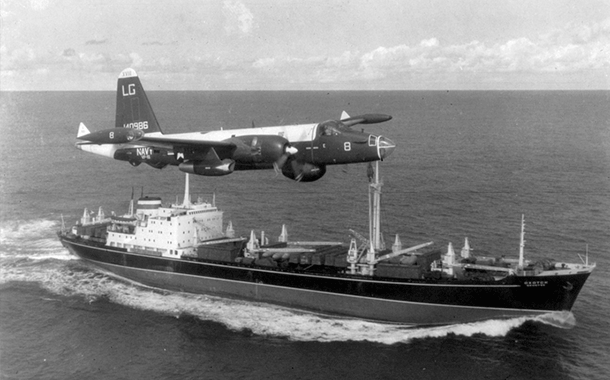<![CDATA[On September 15th 1962 fifteen medium range nuclear missiles deployed to Cuba by the Soviet Union were made operational. The event was a key precursor to what would become known as the Cuban Missile Crisis, the point in the Cold War where the USSR and the USA came perilously close to a thermonuclear conflict. The Soviet Union had installed the nuclear weapons on Cuba in response to the USA's deployment of warheads in Italy and Turkey. Both countries had developed formidable nuclear arsenals since the end of the Second World War. The USA's actions in Turkey and Italy gave it a significant tactical advantage, meaning it could launch a nuclear attack on the Soviet Union much faster than the USSR could in return. The nuclear balance had tilted in favour of the West, and the USSR sought a response. The missiles in Cuba meant it had a nuclear base just 90 miles from the US mainland, a major threat to US national security. Relations between the US and Cuba had been heated for some time. Cuba's position just off of the coast of Florida meant it had always held great significance for US foreign policy, as well as having major economic ties. In the early 1950's Fulgencio Batista took the country's presidency through a military coup. Batista's presidency was blighted by high unemployment and a poor water infrastructure. He allowed American companies to gain an increasingly dominant role in the Cuban economy, which ensured support from the US government, despite growing descent at home. An armed revolution started in July 1953, and by 1959 Batista had been removed from power. This would fundamentally alter the relationship between the two countries. The Cuban Revolution resulted in the government of Fidel Castro. The leader led fundamental changes in Cuban society, most importantly, a process of nationalisation of the economy and industry started. In August 1960, all US property in Cuba was nationalised, with the US freezing all Cuban assets on its shores in response. An embargo of Cuba followed, that continues to this day, and the US cut all diplomatic ties with the country. In April 1961 the US backed an armed counter revolution at the Bay of Pigs. It ultimately failed, but revealed the extent the US was willing to go to oust Castro's government. Seeking an opportunity to gain influence in the Caribbean, the USSR quickly built ties with the fledgling socialist state. In May 1962, Castro agreed to allow Russian nuclear missiles to be based on Cuban soil. Although reluctant to appear as a Soviet puppet, the presence of the missiles and guarantees of Soviet support seemed the surest way to protect the country from future US aggression. With this, the process of sending nuclear missiles to Cuba started. On September 11th the Soviet Foreign Office had announced that any US assault on Cuba would result in nuclear war. In the US, the 10th September had seen the US Senate unanimously agree to allow Kennedy to call up 150,000 US reservists, a sign that the President was preparing for conflict. The deployment of the missiles on the 15th was not made public, but it was another crucial step in the escalating tensions. September 1962 was a month where the USSR and USA seemed to toy with each other, testing each others resolve. In October this posturing would escalate to terrifying effect, with a small island nation forced into the centre of a conflict between the great powers. ]]>
Origins of the Cuban Missile Crisis
